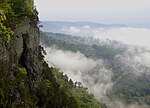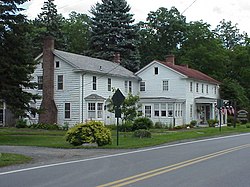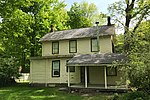Minisink Archaeological Site
1900 archaeological discoveriesArchaeological sites in New JerseyArchaeological sites on the National Register of Historic Places in New JerseyArchaeological sites on the National Register of Historic Places in PennsylvaniaDelaware Water Gap National Recreation Area ... and 8 more
Former Native American populated places in PennsylvaniaGeography of Pike County, PennsylvaniaNational Historic Landmarks in New JerseyNational Historic Landmarks in PennsylvaniaNational Register of Historic Places in Sussex County, New JerseyNative American history of New JerseyNative American history of PennsylvaniaUse mdy dates from August 2023

Minisink Archeological Site, also known as Minisink Historic District, is an archeological site of 1320 acres located in both Sussex County, New Jersey and Pike County, Pennsylvania. It was part of a region occupied by Munsee-speaking Lenape that extended from southern New York across northern New Jersey to northeastern Pennsylvania. The Munsee were speakers of one of the three major language dialects of the Lenape Native American tribe. This interstate territory became the most important Munsee community for the majority of the 17th and 18th centuries.
Excerpt from the Wikipedia article Minisink Archaeological Site (License: CC BY-SA 3.0, Authors, Images).Minisink Archaeological Site
McDade Recreational Trail, Lehman Township
Geographical coordinates (GPS) Address Nearby Places Show on map
Geographical coordinates (GPS)
| Latitude | Longitude |
|---|---|
| N 41.093454 ° | E -74.992247 ° |
Address
McDade Recreational Trail
18314 Lehman Township
Pennsylvania, United States
Open on Google Maps










